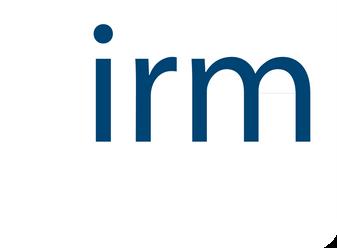Digital Ethics Guidelines



Foreword
The last few years have seen digital technology evolve from a supporting tool to a defining force in how we work, communicate, and make decisions Since 2022, the rapid rise of artificial intelligence particularly generative AI has accelerated this transformation at an unprecedented pace. What began as experimental models capable of drafting text or creating images has now become a mainstream technology reshaping industries, professions, and everyday life
History reminds us that failing to consider the ethical implications of technological change brings risks The first Industrial Revolution displaced skilled workers and triggered unrest, as people struggled to adapt to mechanisation Today’s so-called fourth Industrial Revolution driven by automation, data, and AI presents challenges of a similar scale But unlike earlier tools, generative AI systems make and shape decisions with us, raising questions of accountability, fairness, transparency, and trust at a global level
As risk professionals, we have a duty to help organisations navigate this terrain responsibly New technologies bring extraordinary opportunities for innovation and efficiency, but they also carry risks from bias and misinformation to privacy breaches and over-reliance on automated decisionmaking Striking the right balance between opportunity and harm is at the heart of digital ethics, and it requires careful consideration of the societal as well as organisational impacts of these tools.
Importantly, engaging with digital ethics does not require us to be engineers or AI specialists What it requires is the willingness to ask the right questions of those building, deploying, and managing these technologies: Who benefits? Who might be harmed? What safeguards are in place?
This updated set of Digital Ethics Guidelines, created by Mark Turner, distils key principles into clear, practical language for the risk management community Each principle is supported by illustrative examples to help guide ethical decision-making in an increasingly AI-enabled world
I hope that these guidelines will serve as a timely and valuable resource for risk professionals everywhere as we step further into this new era one in which generative AI and digital innovation will continue to shape not just our organisations, but society as a whole.

Stephen Sidebottom Chair, IRM September 2025
Application of the guideline
The Fourth Industrial Revolution (LiIR) is characterised by the melding of many advanced technologies, resulting in blurring boundaries between physical, digital, and biological systems in highly complex networks
Additionally, Artificial Intelligence technologies are advancing at breakneck speed, introducing decisionmaking processes independent of human involvement Decisions made using such technologies, either directly or through human agents, can and will have wideranging consequences for individuals, societies, and the natural world for potentially hundreds of years
The IRM recognises that risk professionals are instrumental in ensuring that technologies are challenged to generate 'good' results for people, organisations, society, and biological ecosystems
To help bring clarity to a technically challenging and highly complex subject, the Professional Standards Committee of the IRM has undertaken this research to support its members in being better prepared when faced with potentially ethically challenging technological scenarios
Technology that is appropriately and ethically applied can help organisations to protect their profitability, efficiency, resilience, reputation, and attractiveness as a place to work
The guidelines presented in this document have been created to help the risk professional ask the types of questions necessary to balance the value that digital technologies undoubtedly provide against potential harm Such a balancing act requires the consideration of the ethics of doing business in a digital environment
When considering ethics, it is necessary to think beyond mere legalities and to consider whether a decision or action is fundamentally right or wrong This changes the decision-making process ' s dimension from compliance to one of principle; the risk professional should have a strong moral compass to know right from wrong and the fortitude to challenge unethical behaviour
Ethics must be considered in the context of the culture within which the ethical decision is being made. If an organisation's ethical culture is poor, then challenging the digital ethics in isolation will at best fall on deaf ears, or worse, result in the curtailing of your career.
As such, it is recommended that these guidelines be applied with full appreciation and understanding of the current cultural climate in which you find yourself
However, remember that if you are a member of the IRM in whatever capacity, then you are expected to abide by the IRM's Code of Conduct If the ethical culture of an organisation is deemed to require change, the risk professional can support the development of attitudes and behaviours to improve the culture
It should also be remembered that what is right and legal today may become wrong or even illegal in the future The application of these guidelines should be regularly reviewed to ensure that previous decisions still pass the test of right or wrong
Testing the principles
When applying the principles presented in the guidelines, it is worth considering four basic tests:
Accountability: Are appropriate and effective governance and oversight mechanisms in place to safeguard all potential stakeholders in the technology?
Fairness: Could the technology discriminate, either intentionally or inadvertently, against individuals or social groups?
Transparency: Would the technology's actions and processes be straightforward for a knowledgeable human to understand?
Each principle has a few examples of potential tests, but it is the risk professional's responsibility to ensure that appropriate tests are considered and implemented
Being ethical goes beyond legal compliance. It is about doing what is right for the organisation and society at large.


Principle One
If something should not be done in the physical world, it should not be done in the digital world Being ethical goes beyond legal compliance It is about doing what is right for the organisation and society at large While it may be easy for many people to determine what is right and wrong in the real world, it may be less straightforward when considering the digital world
The IRM code of ethics can be used as a checklist and reference on what constitutes ethical behaviour in the physical or digital domains.
Digital technologies quickly transcend national and international borders. Laws and moral codes vary around the world. What may be legal and morally acceptable in one country at one point in time may be considered illegal, immoral, or unethical in another country or at a later date Risk professionals need to use their judgment and their understanding of different cultures to be sure that their application of digital technology has the widest ethical acceptability
Where in doubt, the risk professional has an ethical responsibility to research and confirm the ethical applicability Given that ethical principles can change over time, all digital technologies impacting humans should be reviewed throughout the life cycle of the technology - during its conception throughout its use and even during its archiving or disposal if appropriate
Example questions for testing the principle:
Is it clear who would be held accountable in a court of law (civil or criminal) if the principle is not upheld?
Can the technology be weaponised?
Could the technology discriminate against individuals or social groups in a manner deemed unfair?
Does the designed concept of fairness carry across borders?
How transparent and legal are the gathering, processing, and retention of data and the technology's resulting actions?
Where sources are not transparent, can the complete legality of the data be proven?
Can the technology put individual lives, societies, or biological ecosystems in danger, even unintentionally? How can you be sure?
Can the technology be used to subvert democratic or economic principles to gain an unfair advantage to individuals or social groups?
Testing the principles
When applying the principles presented in the guidelines, it is worth considering four basic tests:
Accountability: Are appropriate and effective governance and oversight mechanisms in place to safeguard all potential stakeholders in the technology?
Fairness: Could the technology discriminate, either intentionally or inadvertently, against individuals or social groups?
Transparency: Would the technology's actions and processes be straightforward for a knowledgeable human to understand?
Each principle has a few examples of potential tests, but it is the risk professional's responsibility to ensure that appropriate tests are considered and implemented
Example: You would not want to use stolen or counterfeit goods to manufacture your physical goods Therefore, why would you use unlicensed or cracked (essentially stolen) or unverified (potentially counterfeit) software within your organisation or your digital product?
The worldwide trade in cracked and unlicensed software in 2018 was close to $50 billion, with $20 billion accounted for in North America and Western Europe alone Approximately 37% of software in use around the world is stolen, and malware from unlicensed software costs companies worldwide nearly $359 billion a year
Potential Actions: Audits of software licences should be routinely conducted across an organisation's estate to ensure that all software products are correctly licenced and issued and are being used by the licencing agreements.
Also, the audit should ascertain that the software is authentic and procured from reputable suppliers.
Principle Two
Data should be secured to ensure that it is complete, correct, consistent, and current as far as reasonably practicable
Data represents all digital activities' foundations, and digital activities are found in every complex human system These include transportation systems, energy and water systems, food production systems, defence and security systems, and many more Where data security is compromised, the potential for ethical breaches increases significantly, with resulting impacts on individuals or groups, e.g., customers, employees, associated organisations, the wider population, etc.
Ensuring that data, particularly personal and commercially sensitive data, is protected against internal and external threats is an ethical imperative, both digitally and physically Just as a building or office would be locked and access-controlled, data and digital technology should be secured
Staff should be trained to defend against phishing and other social engineering attacks, and protocols should be implemented and tested to ensure that information and communications technology (ICT) security is robust
Building organisational resilience against cyber attacks is not only good for business but also aids in building confidence and trust around data security for ethical decision-making There may also be a financial benefit in the form of reducing insurance costs
Incorrect or obsolete data is potentially dangerous Ensuring that data is not only complete and current but also untainted is critical Data integrity should be rigorously assessed, mainly where there is a risk to individual lives, social groups, or the wider environment
The computer-based analysis results should be consistent and transparent such that recipients and decision makers can trust the data they are using. Obfuscating messages by presenting data in an inconsistent or deliberately confusing way can easily be seen as unethical, particularly if the resulting decisions favour an individual or social group. While these guidelines cannot specify the distinction between basic marketing, propaganda, and outright unethical behaviour, risk professionals should use their judgement to ensure that ownership and accountability for potentially unethical behaviour are correctly apportioned and that unethical behaviour is appropriately called out when suspected
Example questions for testing the principle:
Does the data have clear ownership and accountability?
Who is responsible for checking data integrity?
Are outputs presented in a fair way that is transparent and clear?
Has the data been robustly secured, and can its provenance be verified?
Do decisions made from the data unfairly affect individuals or social groups?
Can errors in the data cause harm to individuals, social groups, or biological ecosystems either now or in the future?
Can errors in the data, either deliberate or accidental, subvert the democratic or economic principles to advantage an individual or social group?
Example: Data security failures cost companies millions of pounds each year through lost data, regulatory fines, and share price impacts, not to mention the loss of trust from customers and brand damage
Potential Actions: Risk professionals from all departments should be conscious of data and digital system security risks
Operating in functional silos can lead to potential threats being missed Organisations should emphasise to their employees that network and data security is a risk affecting everyone and that everyone has a part to play in mitigating it
If appropriate for your organisation, risk teams could organise a cross-functional risk workshop on data security to break down silos and seek fresh perspectives
The agenda could include, for example, decision-making algorithms in recruitment or other HR activities; how the security of sensitive data is maintained in finance, mergers & acquisitions (M&A). research & development. Authorisation for communications releases over social media and response plans to negative social media comments: physical systems at risk from data corruption or malicious manipulation
Principle Three
Data sources and resulting outputs should be confirmed as free from bias as far as reasonably practicable
All humans have natural prejudices[li] and cognitive bias
Indeed, science has identified at least 185 biases and heuristics When people create data, it is easy for these human biases to be incorporated into it
When the data is subsequently used by technology to perform calculations and make decisions, the human bias in the data can manifest itself in the machine's output.
Decisions made or suggestions proposed by machines are only as good as the data inputs ('garbage in, garbage out,' in computer science jargon). Where machine learning is used, care should be taken in selecting data used to train the models (which is the way artificial intelligence 'learns' how to classify data)
Indeed, the source data not only contains bias, but the decision on which data to use can also have a human bias
For example, while it may be possible to train a recruitment algorithm to review job applications without disclosing sensitive variables such as gender, race, or sexual orientation, the machine could still favour a particular phrase, such as "executed" or "captured "
This would appear more frequently in applications from men This can occur if the machine training has been based on data that has not been appropriately sampled to give equal weight to both genders or other potentially discriminatory characteristics
The need for accurate data interpretation and transparency when relying on digital technology is crucial wherever decisions are being made about people, be they individuals or social groups. Being able to explain the source of the data used to train machine learning algorithms in non-technical terms and articulate the decision-making algorithm to a third party helps remove bias.
Also, training human decision-makers who may rely on digital suggestions can introduce a more human element into the decision-making process However, even this can be called into question if decision-makers hold a similar bias to the algorithm
Principle Two
Example questions to test the principle:
Has the training data been adequately sampled to ensure fair representation of all key characteristics?
Has data used to train machine learning algorithms been sampled from a diverse enough population to ensure fairness is inherent in the process?
Who has responsibility for the tools used within your organisation for decision-making? Have they been trained to look for bias both in the algorithms and in themselves?
For tools used by customers outside of your organisation, are safeguards in place to detect unfair decision-making?
Are results being audited and reviewed to identify potential bias?
How much tolerance does the process have for bias?
For example, making suggestions for holiday destinations may have more tolerance for bias than making a job offer or arresting potential criminals
If bias is discovered in a system, what plans are in place to deal with the fallout?
Example: A job suggestion algorithm used on a social media platform presented higher-paid job roles more often to men than women The algorithm had learned this behaviour as men tended to search for and click on higher-paying jobs than women
Potential Actions: During the technology development, the development team should be challenged on the data sources on which they are building their system, and also the conclusions from the data and how these were derived
It would be appropriate for 'data bias' to be an entry in the project risk register, and the necessary action allocated to a person or team with proper knowledge and training in identifying bias. The results of the risk actions would be made available to the management team.
After the technology has been published or released, the project team should ensure a process to frequently test the results to look for bias, particularly if the algorithm continues to 'learn' based on its use
Conclusion
Digital ethics is a complex subject that requires a crossfunctional approach to ensure all aspects have been considered No single risk professional will ever be able to perceive all of the ethical risks within an organisation, so building relationships with colleagues in all business areas is essential in safeguarding the organisation from digital ethical vulnerabilities
Applying the principles and example questions suggested in this guideline can help identify the digital ethical risks within an organisation However, this should not be considered an exhaustive list as digital technologies are progressing and developing at an extraordinary pace.
Risk professionals should remain abreast of risk trends and adapt their ways of working to accommodate technical developments.
Risk professionals also need to remain vigilant to changes within their organisation particularly where new digital technologies have been adopted The three principles outlined in this paper can be used to challenge decisionmakers and ensure that the right people are asking the right questions at the right time
An understanding of techno-jargon is not needed However, the application of digital ethical thinking should be demonstrated clearly and reassuringly Risk professionals should be empowered and encouraged to look for such demonstrations ask the appropriate questions, and flag all senior management concerns
Sources
[1] BSA Global Survey 2018 https:/ lgss bsa orgl
[2] Better Security Measures May Reduce Cyber Insurance Premiums I Mimecast Blog
[3] How fake data could lead to failed crops and other woes - BBC News
[Li] Humans are wired for prejudice, but that doesn't have to be the end of the story (theconversation com)
[5] List of cognitive biases - Wikipedia
[6] Amazon scraps secret AI recruiting tool that showed bias against women I Reuters
[7] Women less likely to be shown ads for high-paid jobs on Google, study shows I Google I The Guardian
AI Ethics Addendum: Large Language Models and Generative
(Supplement to the IRM Digital Ethics Guidelines, 2025)
Purpose
This addendum provides updated ethical guidance for risk professionals in light of the rapid adoption of Large Language Models (LLMs) such as GPT, Claude, Gemini, and other generative AI technologies It aligns with the existing three principles and four tests in the original guidelines, but addresses the unique risks, governance needs, and operational realities of modern AI systems
Principle One (AI Context): Ethical Equivalence Between Physical, Digital, and AI Worlds
Ethical constraints must be applied equally to AI-driven actions, whether automated or human-assisted Deploying an LLM to generate, recommend, or execute content does not absolve human operators or organisations of accountability All AI outputs should be subject to the same moral, legal, and reputational standards as human actions
Additional AI-specific tests:
Can the AI output cause harm if acted upon without further verification?
Is there an identified, accountable owner for all AIassisted outputs and their downstream consequences?
Does the AI use unlicensed or unverifiable training data that could expose the organisation to legal or ethical challenges?
Are outputs appropriately labelled to distinguish human-authored from AI-generated content?
Principle Two (AI Context): Data Security, Accuracy, and Provenance in AI Systems
Prevent sensitive or confidential information from being entered into LLMs unless processed in a controlled and compliant environment Implement fact-checking and validation layers for AI outputs before they are used in decision-making Monitor for hallucinations and mitigate through prompt design, retrieval-augmented generation, or human review Require provenance tracking for any AIgenerated recommendation or report
Additional AI-specific tests:
Is there a process to detect and remove prompt injection or malicious manipulation of AI behaviour?
Are all AI training and fine-tuning datasets vetted for legal compliance, accuracy, and relevance?
Is the AI output timestamped, logged, and stored for audit purposes?
Principle Three (AI Context): Minimising and Managing Bias in AI
LLM training data may embed systemic biases from its source corpus; these must be mitigated through curated fine-tuning, bias testing, and continuous monitoring Implement domain-specific ethical reviews before deploying LLMs in sensitive contexts Ensure human reviewers are trained to recognise AI bias patterns and can override outputs where necessary Publish model cards or system fact sheets that outline known limitations, bias risks, and intended use cases
Additional AI-specific tests:
Has the AI been evaluated against fairness benchmarks relevant to the target domain? Are outputs tested periodically for bias drift as models are updated or retrained?
Are mitigation strategies in place if AI bias is detected post-deployment?
Cross-Cutting AI Considerations
These apply across all three principles:
1 Accountability – Assign a named owner for AI governance
2 Transparency – Disclose AI involvement in content generation and decision support
3 Sustainability – Evaluate energy consumption and societal impacts
4 Lifecycle Review – Reassess AI systems regularly
5 Incident Readiness – Maintain an AI ethics incident response plan
Conclusion
The original IRM principles remain essential, but the scale, autonomy, and opacity of modern LLMs introduce new dimensions of ethical risk. Risk professionals must ensure that generative AI adoption is accompanied by robust governance, transparent reporting, and ongoing bias and safety audits.
While technical expertise is valuable, the primary responsibility remains the same: ensuring technology serves people, organisations, and society without undue harm
About Author
Mark Turner
This publication is authorised by the Professional Standards Committee on behalf of the Institute of Risk Management
It has been developed by Mark Turner BSc (Technology) CFIRM, from diverse external sources and the wider risk management community Mark is the founder and managing director of Emsity Ltd, a risk management software consultancy.


